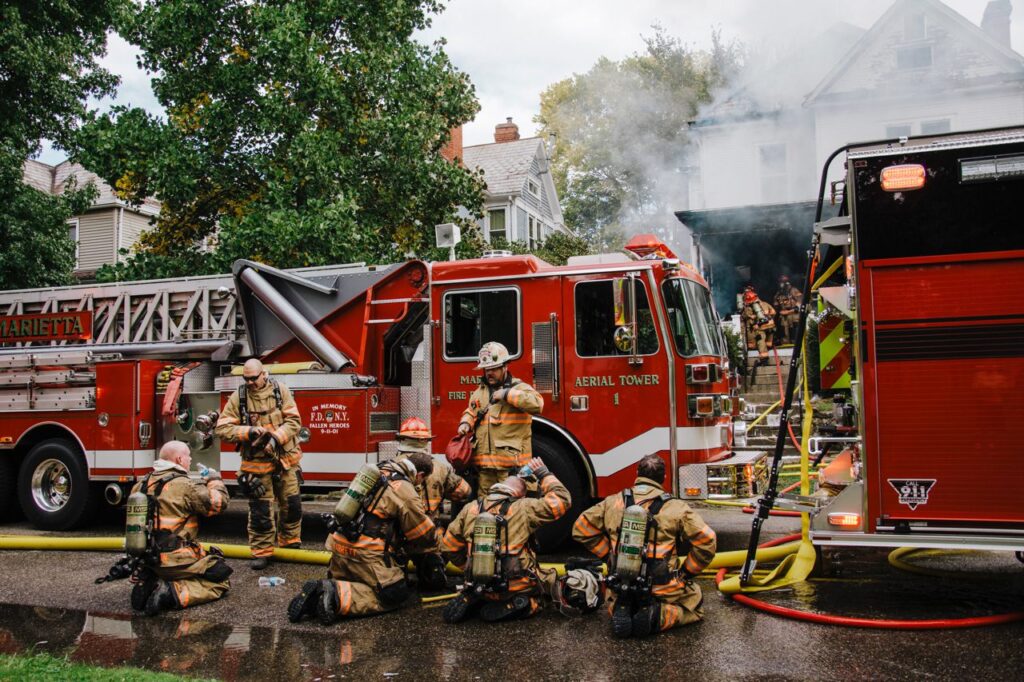
This Patriot’s Day we honor the memory of the 2,977 people killed by terrorists on September 11, 2001. Let’s pause for a moment and renew our solemn vow to never forget. We can also continue our resolve for never again by appreciating the Transportation Security Administration created to prevent similar attacks in the future.
Generally, post disaster studies advance the never again resolve by focusing on future preparation, response, recovery and mitigation. The 18 separate billion-dollar weather disasters in 2022—causing at least 474 deaths—has given emergency management agencies much to review and tweak in their plans. Yet despite being
Want to subscribe to receive blog updates sign up today!
adversely and disproportionately impacted and at higher risk of dying during disasters, older adults and people with disabilities are often excluded from the planning process. This needs to change!
Integrating people with disabilities in emergency drills and exercises is a good place to start. June Isaacson Kailes, a disability policy consultant, provides practical guidance on how to make this happen (see citation at the end of this post):
1. Recruit qualified disability subject matter experts based on experience living with a disability or implementing equal access and compliance with the Americans with Disabilities Act;
2. Use people with actual disabilities not nondisabled actors;
3. Get participant feedback about what worked, didn’t work and what needs to work;
4. Budget for accommodations like handouts in alternative formats or sign language interpreters. Consider helping with the costs of transportation, personal assistants, and support people;
5. Choose an accessible location i.e. near a public transportation stop with accessible restrooms, meeting facilities, and staging area;
6. Schedule the exercise when public transportation is available; and
7. Garner feedback from disabled participants on the exercise and draft After Action Report.
Failure to follow these guidelines can result in flawed plans based on disability stereotypes and misconceptions. Also deaf or mobility impaired recruits may bail on an exercise if unable to understand an unqualified interpreter unfamiliar with the terms being used or unable to use an inaccessible bathroom.
Kathie, a blogger who is blind and participates in local emergency response drills every four years, observes that responders are good caring people, but may lack training on disability dos and don’ts. She encourages people with disabilities to volunteer to be victims and uses her participation to educate responders on disability etiquette. Her top three tips to responders are (1) don’t separate me from my service dog, but if you have to, hold his leash at all times; (2) don’t grab and manhandle me—tell me what you’re doing instead; and (3) don’t push me in front of you—let me take your elbow.
There’s a bill pending in both houses of Congress that addresses these issues—the Real Emergency Access for Aging and Disability Inclusion (REAADI) for Disasters Act Senate (S. 1049) and House (H.R. 2371). Please contact your representatives to solicit support for this law which protects the health, safety and independence of people with disabilities during a disaster.
You may also want to read:
- J.I. Kailes. “Guidance for Integrating People with Disabilities in Emergency Drills and Exercises.” Edition 2, 2020. http://www.jik.com/pubs/Guidance-Drills-Exercises.pdf
- U.S. Senator Bob Casey. “The REAADI (Real Emergency Access for Aging and Disability) Disasters Act. March 29, 2023. https://reaadi.com/wp-content/uploads/2023/03/REAADI-118th-one-pager-3.29.23.pdf
- National Disability Rights Network. “NDRN thanks Congressmembers for their introduction of the Real Emergency Access for Aging and Disability Inclusion for Disasters (REAADI) Act.” April 24, 2023. https://www.ndrn.org/resource/thanks-reaadi/?eType=EmailBlastContent&eId=a66c885d-feed-478b-9aae-857130cdf3e3
- National Council on Disability. “The Impacts of Extreme Weather Events on People with Disabilities.” May 4, 2023. https://ncd.gov/publications/2023/impacts-extreme-weather-events-people-disabilities
- Angela Muir Van Etten. “Plan to Stay Safe.” Blog post. April 26, 2021. https://angelamuirvanetten.com/plan-to-stay-safe/
- Angela Muir Van Etten. Dwarfism Memoir Trilogy. https://angelamuirvanetten.com/books/
